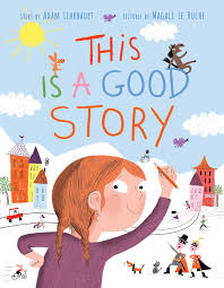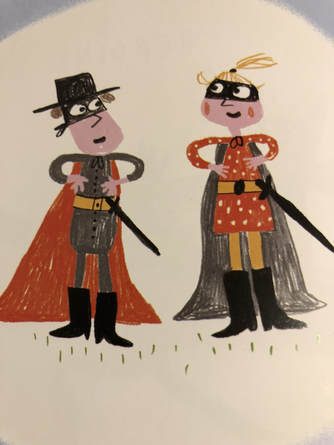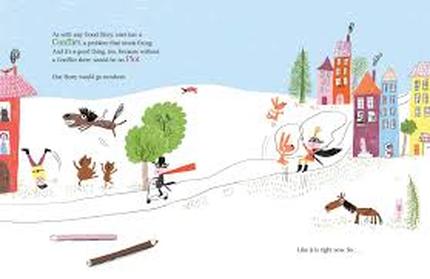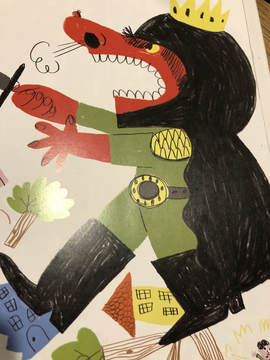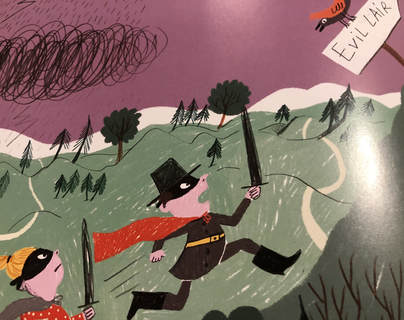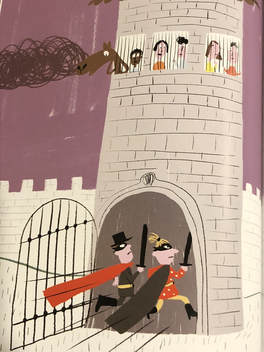Look at the front cover
Identify everything featured in the illustration.
- Describe the action.
- Examine the colour choices and style of drawing. Describe the tone and mood the artisitic techniques establish.
- Name the location of this drawing. Identify the clues used to discover the setting.
- How are the people and animals in this illustration feeling? How do you know?
- The book’s title is This is a Good Story. Determine the connection between the title and the action featured in the illustration. Tell how the action suggests ‘good’ things.
- Predict what This is a Good Story is going to be about.
Read the story and then afterwards discuss some of the following:
1. Our Story begins with Hero and Heroine.A hero and/or heroine are typified as brave adventurers. They are known for their bold and courageous deeds. Explain why the narrator suggested that this story begin with gallant characters such as these.
|
2. What is Conflict, you ask? The word conflict is defined as a controversy or struggle between differing principles or interests. Basically, it’s about people or things that do not get along with each other and how they (hopefully) problems are solved. Tell why a story needs Conflict.
|
3. That’s not an Evil Overlord! Come on. That’s barely a Creepy Sidekick.The character of the Evil Overlord is the antagonist of the Story. The antagonist defies, challenges, and all-around causes problems for protagonists. Determine why the narrator feels that the girl’s first attempt to draw the Evil Overlord was not threatening enough.
|
4. Seriously? What kind of Action is that? This is a dramatic point in the Plot. Our Conflict is building. The Action here will determine the course of the rest of the Story
|
5. No, no, NO! Labeled as in clearly marked. With a sign.
|
The definition of climax is the highlight, the peak, the turning point of a Story. The Climax is the point where all the Conflict comes together in a dramatic way.
|
Victorious, Hero and Heroine join the Townsfolk at The End.
There is much rejoicing.
Wow!
This is a Good Story. Or, is it?
|
The final scene of a Story is called the resolution, the ending place in the Story. Explore this Story’s surprise ending. Discuss how a very minor character, the not-so-Creepy Sidekick introduced early in the story, contributed to the surprise ending.
|
